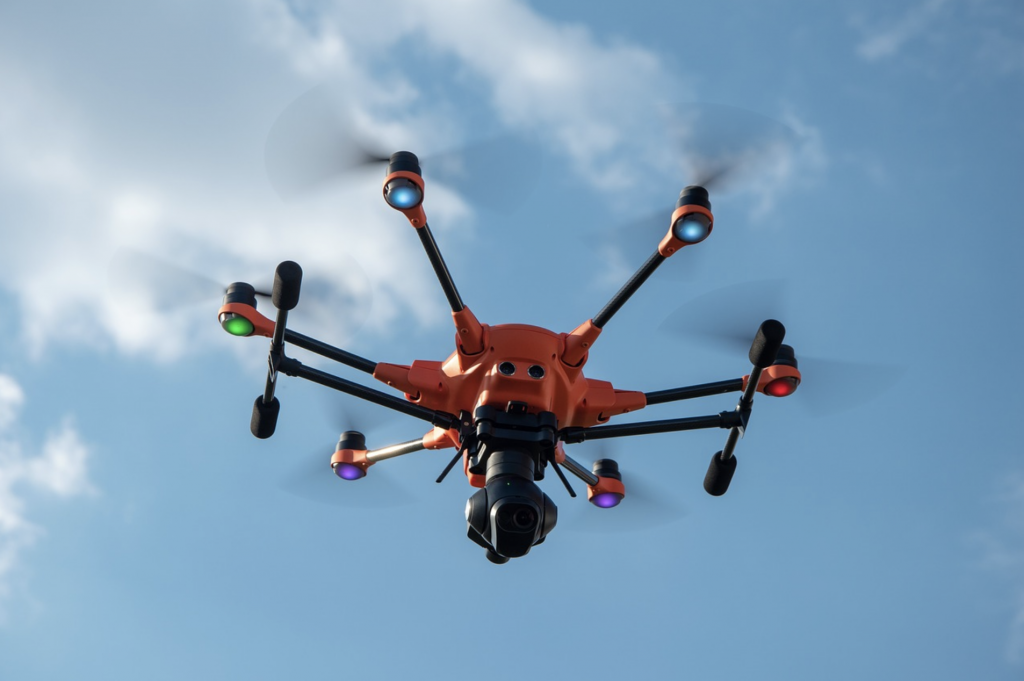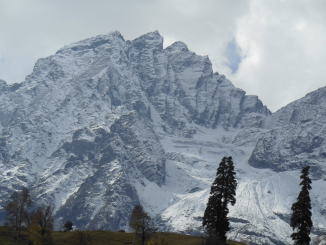‘Drones ply the liminal space between the physical and the digital – pilots fly them, but aren’t in them. They are versatile and fascinating objects – the things they can do range from the mundane (aerial photography) to the spectacular – killing people, for example.’
John Battelle

As America slowly recedes from Afghanistan, it leaves behind a legacy of strategic manoeuvring and geostrategic recalibration. India starts gaining influence in Afghanistan and the Middle East, Pakistan continues to venture beyond Kabul into Central Asia, Iran pushes for more independent regional influence spilling over across Strait of Hormuz and China begins its colossal Belt and Road Initiative triggering all sorts of newfound enthusiasms. One important part of the American legacy, however, surpasses all others; America’s successful utilization of Unmanned Aerial Vehicles or ‘UAVs’ both for reconnaissance and for combat. Give credit where credit is due and, in this case, America’s innovative warfighting doctrine of combining technology with manpower presents a whole new world of possibilities of limiting human casualties without limiting strategic vantage. Like all other wars, the war on terror leaves behind traces of new learning in the conflict zone. Pakistan, Iran, India and China, all begin their own UAV programs, signing deals and making pacts to receive best of what the world has to offer but there is a catch, China leads the current drone market but America employs Armed UAVs most frequently. To top it off, America’s ‘Signature Strike’ and ‘Surgical Strike’ doctrines have somewhat received a cult following from states willing to keep engaging without engaging. For South Asia, introduction of unmanned aerial combat and surveillance takes quite the edge off in terms of learning new ways to keep the Line of Control sufficiently ‘operational’. So how would UAV warfare in South Asia pan out and to what extent would this effect South Asia’s conventional military doctrines?
Pakistan and India have both started what can be termed a new ‘drone race’ effectively aiming to enhance their unmanned aerial systems capabilities. Pakistan’s ‘Burraq’ and India’s ‘Rustom’ drone program effectively seek international learning by importing more technologically advanced drones from Israel, America and China to assess what needs to be done in their indigenous capabilities in such regard. Despite operating a sufficient quantity of smaller UAVs for reconnaissance, New Delhi remains perplexed on how to counter Burraq’s weaponized capability that has been successfully employed in Pakistan’s war on terror. To India, Pakistan not only has advantage in producing armed UAVs but also that such UAVs have also been employed in active engagements. For India, losing control over airspace during conflict is a crucial nudge to its conventional asymmetrical advantage. If Pakistan employs a substantial armed UAV fleet, it can simultaneously engage offensively, collect surveillance effectively, disrupt air-to-air operations and even target multiple land-based installations to incline advantage in its favour. The issue would not be surgically or precisely targeting specific key targets but maximizing range of operations well beyond the current trajectories. Pakistan has been exposed to employment of drones in conflict areas for offensive and defensive purposes and understands exactly how a drone program can be effectively put to use against an adversary still learning the UAV manoeuvres. For New Delhi, a major issue would be Pakistan’s effective use of armed UAVs to disrupt or even completely close its rapid deployment strategy, which it has been trying to perfect since the Sunderji days. Even on the LoC, if Pakistan was to deploy armed UAVs against infantry and artillery that often transgresses the very purpose of a Line of ‘Control’, such surgical manoeuvres would also tilt balance in Islamabad’s favour.
India has almost always aimed for escalation dominance with escalation control in its firm grasp as a means to dictate conflict in South Asia. An armed UAV program with sufficient quantity, quality and battle-tested certification against India’s conventional warfighting doctrine would cause devastating effects on its escalation dominance belief. For Pakistan however, a UAV program poses another challenge: should Pakistan’s UAV deployment be independent or under some branch of its armed forces or should it be created separately for each branch of the military? The issue is not in terms of surveillance or reconnaissance but in terms of both surveillance and engagement. Pakistan’s employment of Burraq was a joint venture between air-force and army and despite it showing considerable success against a smaller, more tactically assembled enemy, it might need some institutional modification for a bigger, more comprehensive adversary. Pakistan, learning from both its experience and experiences of America in Afghanistan, has a more delegated control mechanism for its UAV fleet. Alongside and beyond LoC are two different scenarios with the same enemy which have required two different deployment patterns. To effectively deploy its UAV capability, Pakistan has restricted its armed UAVs to operational levels, limiting such technology from tactical deployment. For India, its dual Pakistan-China threat means spreading its UAV program on all tactical, operational and strategic levels, focusing on more autonomous UAV forces and less in terms of delegating to its military branches.
Strategic partnership with China means Pakistan might end up looking towards cyberspace and electronic warfare capabilities. Disruption technology equipped on UAVs means Pakistan gets even more control of conflict. Autonomous surveillance and disruption can rapidly transform the plane of warfare and its effective utilization can significantly transform outcomes of escalation. UAVs and other sophisticated technologies are designed to prevent abrupt escalation spirals by recessing gaps between responses created by actual losses and perceived countervalue apprehensions during conflict. For South Asia, a new dimension of strategic scholarship and military modification is at play beyond conventional arrangements. Pakistan and India are quickly learning to adapt to new technologies and forms of warfare, most of them being below their conventional redlines and such can stabilize their conflicting situation. On the other hand, risking deployment of such technologies might also trigger a new escalatory pattern, one that might not be able to differentiate between loss of a UAV from loss of any other conventional piece of equipment. Such disproportionate analysis of a conflicting situation amid armed UAVs might end up being more volatile than current force posturing but till now, the ‘UAV fever’ is catching.
‘I think artificial intelligence will likely change the character of warfare, and I believe whoever masters it first will dominate on the battlefield for many, many, many years.’
Mark Esper
Disclaimer: The views expressed above are writer’s own deliberations and are neither indicative nor suggestive to his organization’s/employer’s opinions.
![]()




Be the first to comment